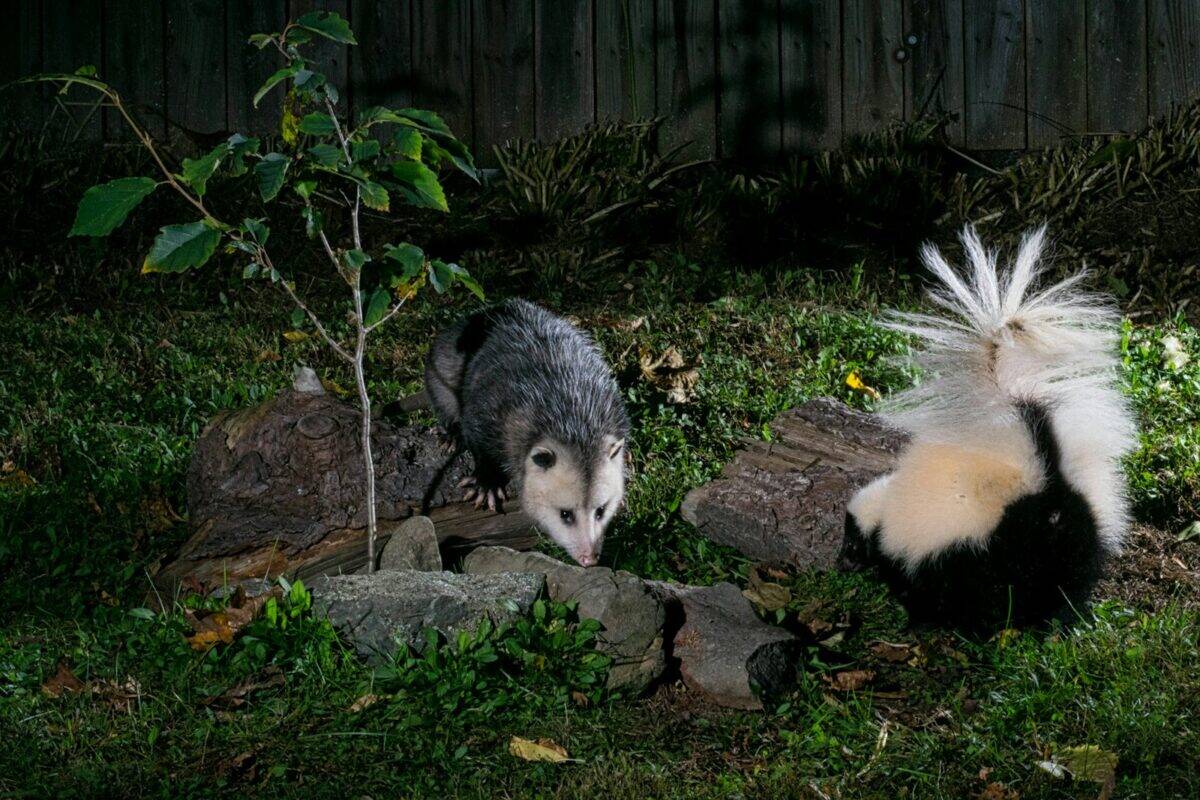In the secretive world of nocturnal mammals, few territorial disputes are as fascinating—or potentially odorous—as those between competing skunks. These distinctive black-and-white creatures may appear docile, but when territorial boundaries are challenged, they engage in complex behaviors that showcase the intricate balance of nature’s social hierarchies. Territorial competition between skunks involves elaborate displays, communication through scent, and occasionally, physical confrontations that reveal much about their ecological niche and survival strategies.
Understanding Skunk Territories

Skunks are primarily solitary creatures that establish and maintain individual territories spanning anywhere from 0.5 to 2 miles in diameter, depending on the species, habitat quality, and food availability. Within these territories, skunks create a network of dens and feeding areas they defend from intruders. The striped skunk (Mephitis mephitis), North America’s most common skunk species, typically maintains a territory of about 1.5 square miles, while the smaller spotted skunks may defend areas less than half that size. These territories serve crucial functions: they provide reliable access to food resources, shelter opportunities, and potential mating partners while minimizing competition with other skunks.
Territorial Marking Behaviors

The first line of defense in territorial maintenance comes through scent marking. Skunks possess highly developed anal glands that produce their infamous defensive spray, but they also secrete less potent scents used specifically for marking territory boundaries. Male skunks are particularly diligent about marking, using a combination of urine, feces, and secretions from specialized scent glands to create an olfactory perimeter. These scent posts serve as chemical signposts that communicate important information to other skunks, including the marking individual’s sex, reproductive status, and how recently they visited that location. Research has shown that skunks can detect these scent markings from considerable distances, allowing them to avoid confrontations by recognizing established territories before physical encounters occur.
Initial Encounters Between Competing Skunks
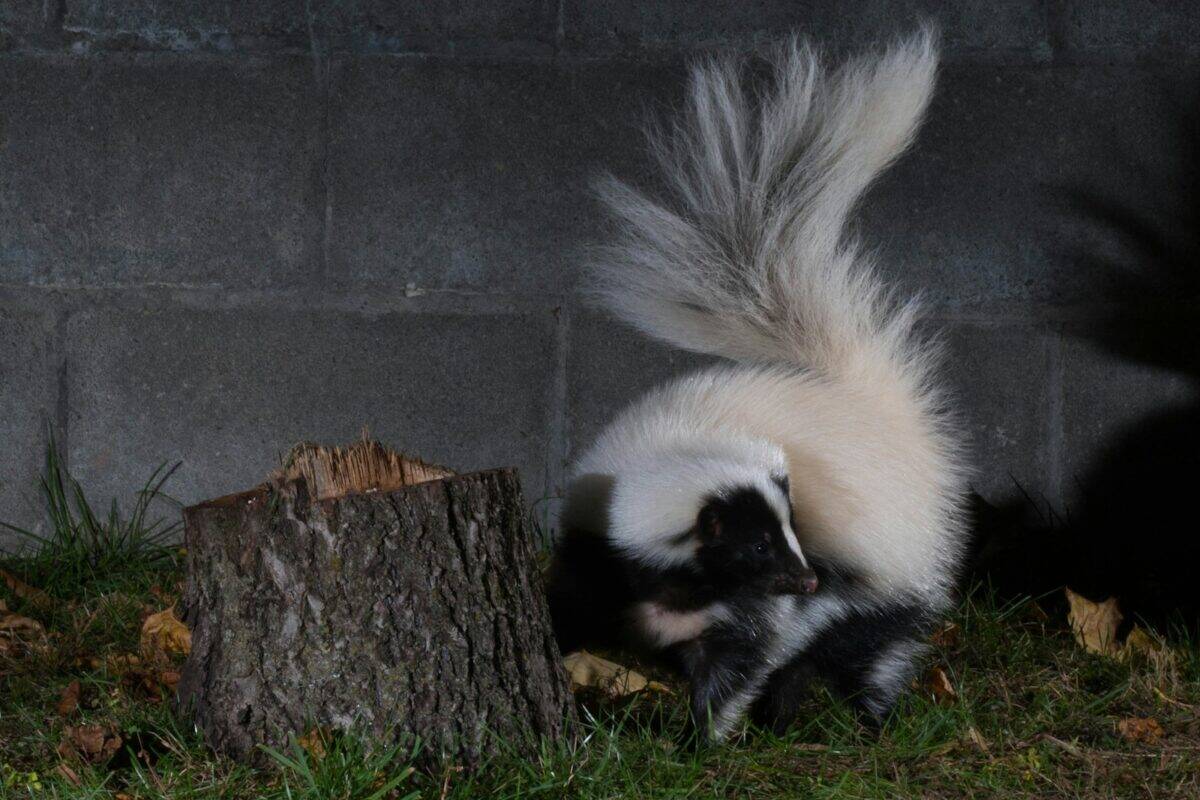
When a skunk detects an intruder in its territory, or when two skunks simultaneously attempt to claim the same area, their initial interactions follow a relatively predictable pattern. The encounter typically begins with mutual detection through scent, followed by cautious visual confirmation. Both skunks will often freeze momentarily, assessing each other from a distance of several yards. This standoff phase is critical, as it allows both animals to gauge the size, condition, and determination of their potential competitor. Researchers studying skunk behavior have noted that many territorial disputes are resolved during this initial assessment phase, with one skunk—usually the smaller or younger individual—choosing to retreat rather than escalate the confrontation.
The Warning Display Sequence

If neither skunk retreats during the initial standoff, they progress to a series of increasingly dramatic warning displays. This behavioral sequence is remarkably consistent across skunk species and serves to resolve territorial disputes without resorting to their chemical defenses. The sequence typically begins with foot stamping, where both skunks will alternately lift and forcefully plant their front feet on the ground. This action creates both visual and auditory signals of aggression. Next, skunks will often raise their tails partially while arching their backs to appear larger. If these warnings go unheeded, the display escalates to full tail raising, with the distinctive black-and-white tail held high and fully fluffed. In the final warning stage, skunks will turn their hindquarters toward their opponent while looking back over their shoulder—the unmistakable pre-spray position that signals imminent chemical defense deployment.
Vocalizations During Territorial Disputes
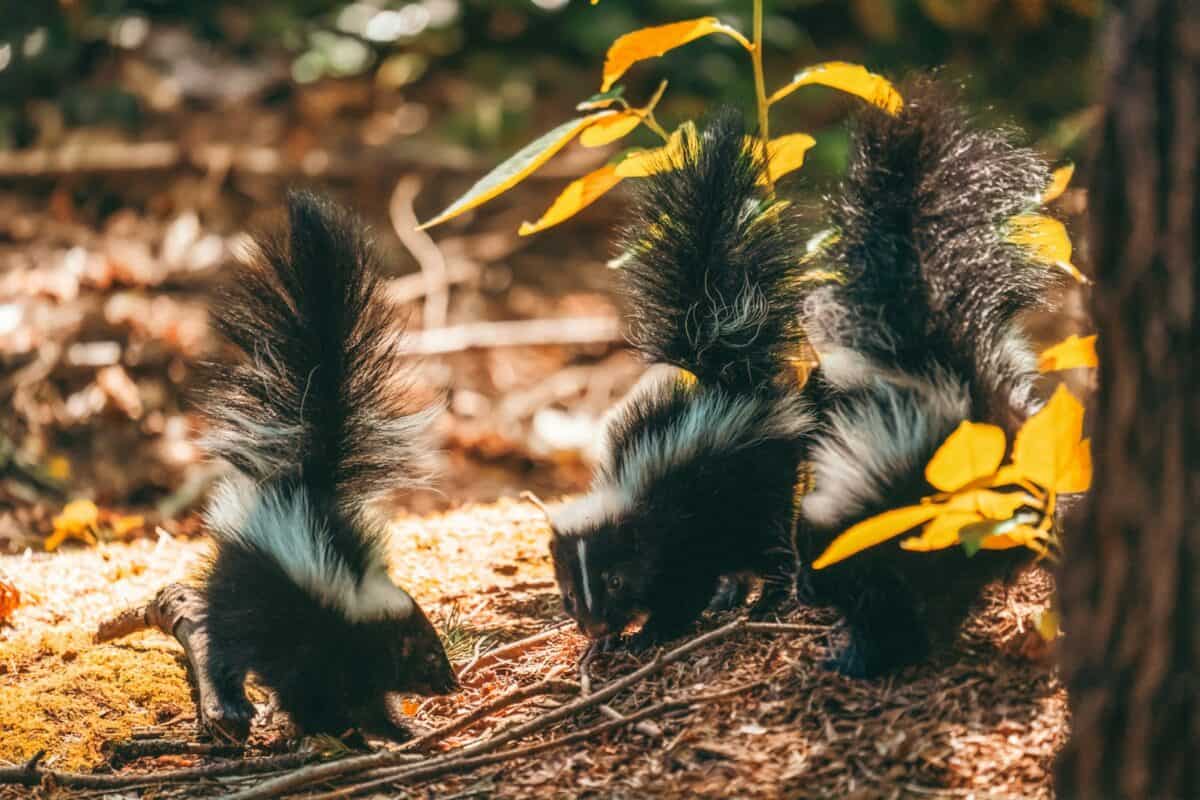
Though skunks are generally quiet animals, territorial confrontations bring out a surprising vocal repertoire. During face-offs, competing skunks employ a range of sounds including hisses, growls, squeals, and churring noises. These vocalizations serve as additional warning mechanisms and help communicate threat levels without physical contact. The intensity and frequency of these vocalizations typically increase as the confrontation escalates. Striped skunks produce low, guttural growls during serious territorial disputes, while spotted skunks emit a distinctive rapid chattering sound. Researchers have documented that female skunks with young produce particularly aggressive vocalizations when defending territory near their dens, suggesting that the presence of offspring significantly elevates territorial defense behaviors.
Physical Confrontations

When warning displays and vocalizations fail to resolve the territorial dispute, physical confrontation may occur, though this represents a last resort. Skunk physical fights involve a combination of lunging, batting with front paws, and attempting to bite opponents. These confrontations rarely cause serious injury, as both participants typically maintain their defensive posture with tail raised—essentially creating a Mexican standoff where neither can attack effectively without exposing themselves to the other’s spray. Physical combat between skunks is generally brief, lasting less than a minute in most observed cases. Interestingly, research has shown that skunks almost never spray each other during these territorial disputes, seeming to recognize the mutual disadvantage that would result from close-range chemical exchange.
Chemical Warfare: The Nuclear Option
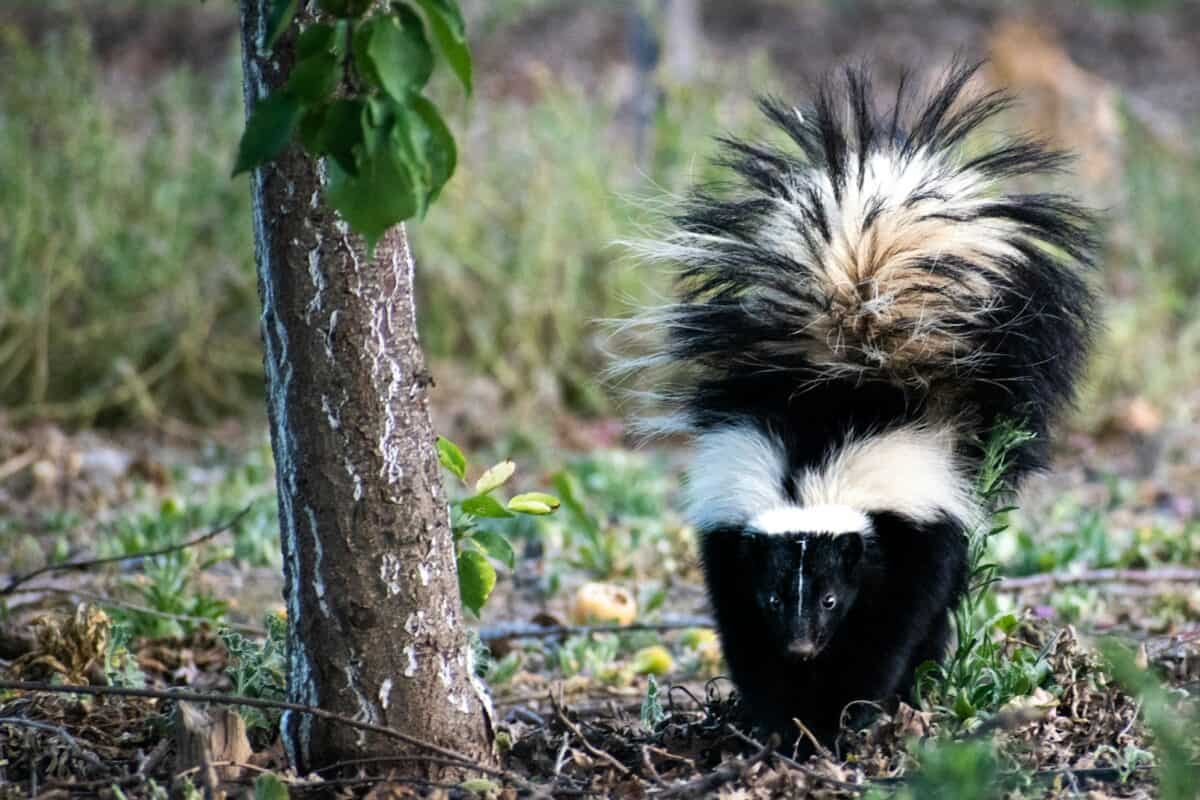
Although skunks rarely spray each other directly, the threat of chemical deployment plays a crucial role in territorial disputes. A skunk’s spray—a potent mixture of sulfur-containing compounds called thiols—can be accurately directed up to 10-15 feet and causes intense discomfort to the target through its powerful odor and potential to irritate eyes and mucous membranes. This chemical defense represents the ultimate territorial enforcement mechanism, but it comes with significant costs. After a full discharge, a skunk requires up to ten days to replenish its spray reserves, leaving it vulnerable to predators. This biological limitation explains why skunks use elaborate warning displays before resorting to spraying. In the rare cases where spraying does occur during territorial disputes, it usually represents a desperate measure when a skunk feels cornered with no escape route.
Factors Determining Territorial Winners
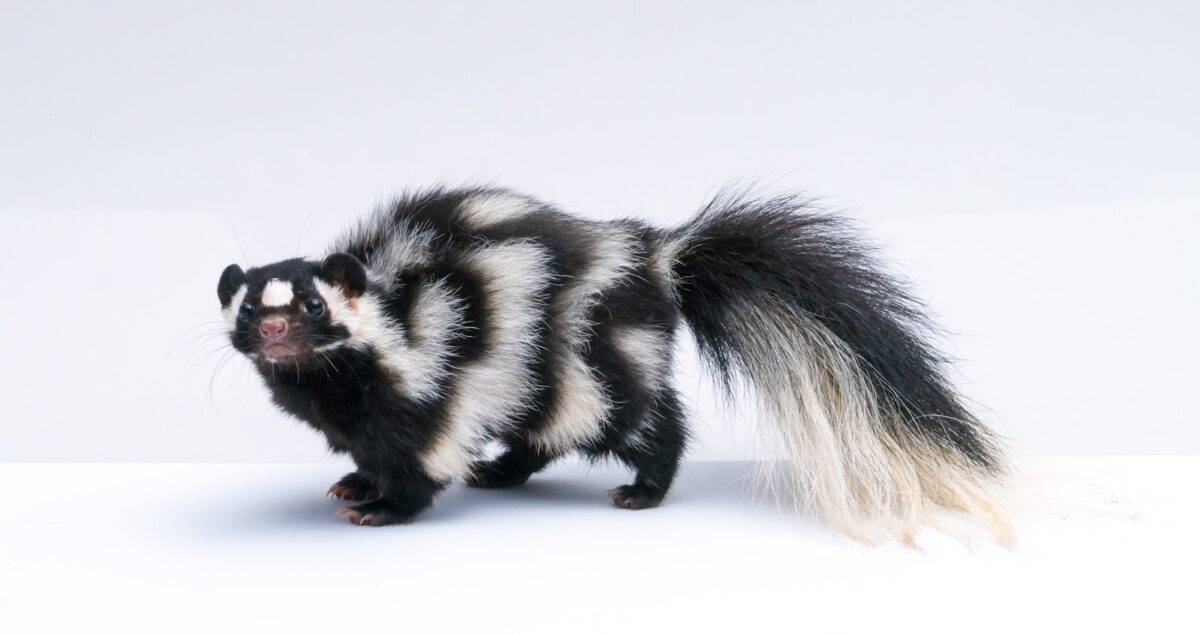
Several key factors influence the outcome of territorial disputes between skunks. Body size plays a significant role, with larger skunks generally dominating smaller ones. Age and experience also matter—older skunks with established territories typically prevail over younger challengers. The reproductive status of the competitors dramatically affects outcomes, with females caring for young displaying extraordinary territorial aggression. Research has demonstrated that resident skunks enjoy a substantial home-field advantage, winning approximately 70% of territorial conflicts against intruders of similar size and age. This advantage stems from the resident’s greater familiarity with the terrain, including knowledge of escape routes, food sources, and optimal defensive positions.
Seasonal Variations in Territorial Behavior
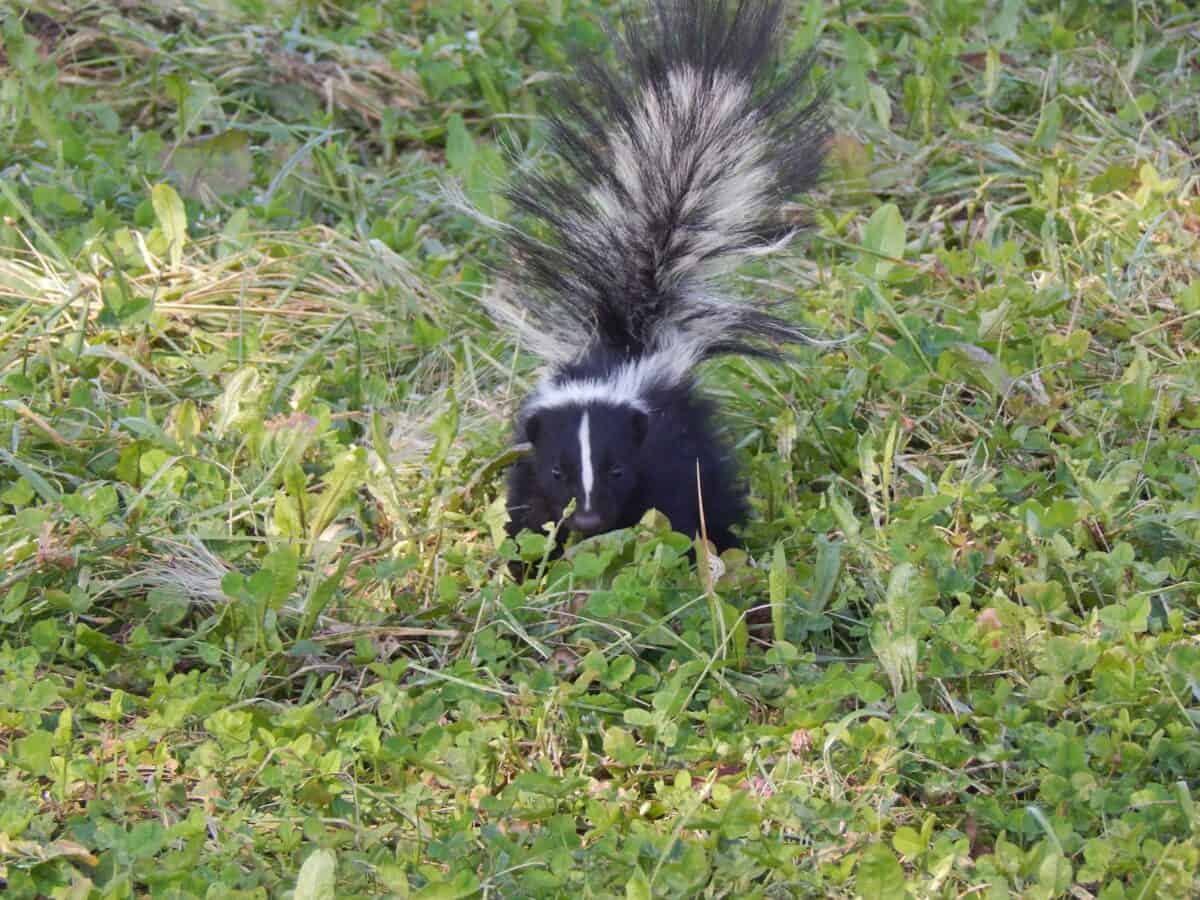
Skunk territorial behavior shows marked seasonal fluctuations tied to their reproductive cycle. During the late winter breeding season (February-March in most North American regions), male skunks become significantly more aggressive about territory defense as they compete for access to females. Studies tracking skunk movements have revealed that males may temporarily expand their territorial patrols by up to 50% during this period. Conversely, during the late spring and early summer when females are raising young, male territorial disputes decrease while female defense of den sites intensifies dramatically. In autumn, as young skunks disperse to establish their own territories, competition increases again, with resident adults working to maintain their established boundaries against the new generation of competitors.
Territory Sharing and Tolerance Zones
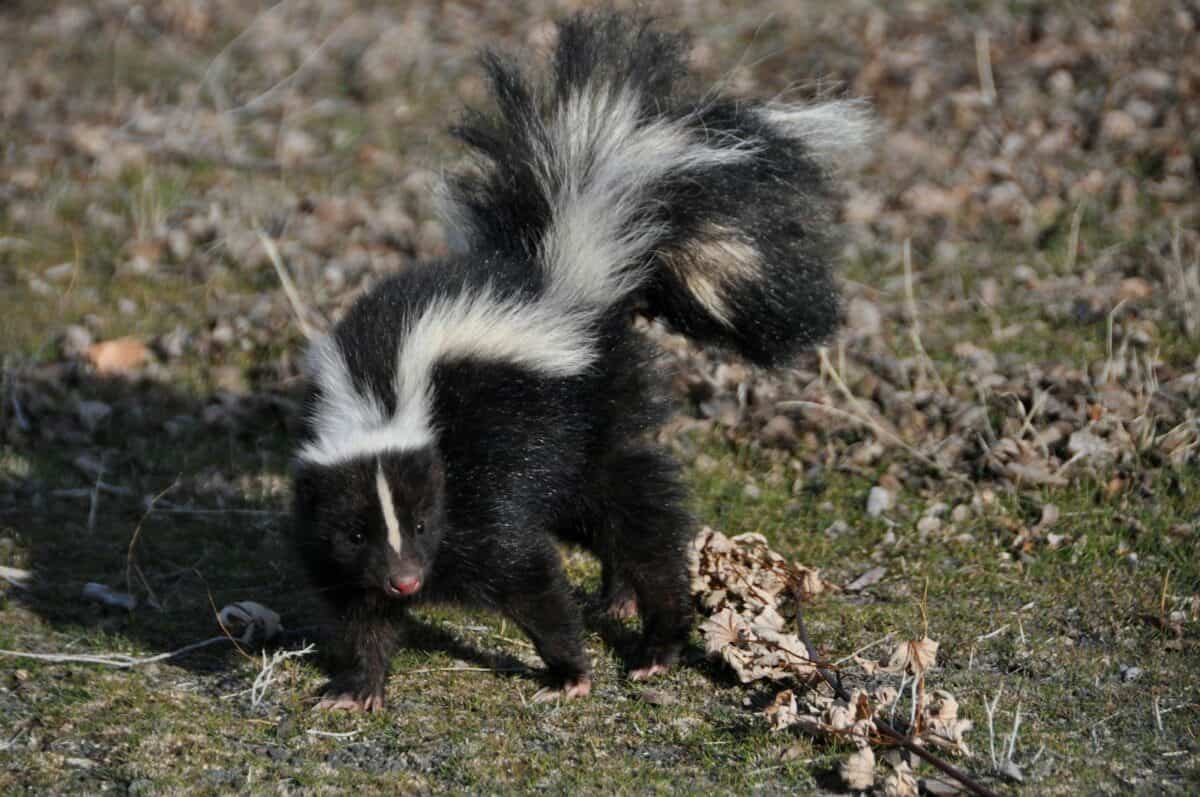
Despite their reputation as strictly solitary animals, research has revealed that skunks sometimes develop nuanced territory-sharing arrangements. In areas with abundant resources, territories may overlap at the edges, creating “neutral zones” where skunks practice temporal avoidance—using the same areas but at different times. Female skunks, particularly those who may be related, occasionally demonstrate higher tolerance for territory overlap than males. In urban and suburban environments where food resources are concentrated (such as around dumpsters or garden areas), researchers have documented multiple skunks sharing feeding sites through a time-sharing system. These adaptable territorial arrangements demonstrate the species’ behavioral flexibility in response to environmental conditions.
Human Impact on Skunk Territorial Disputes
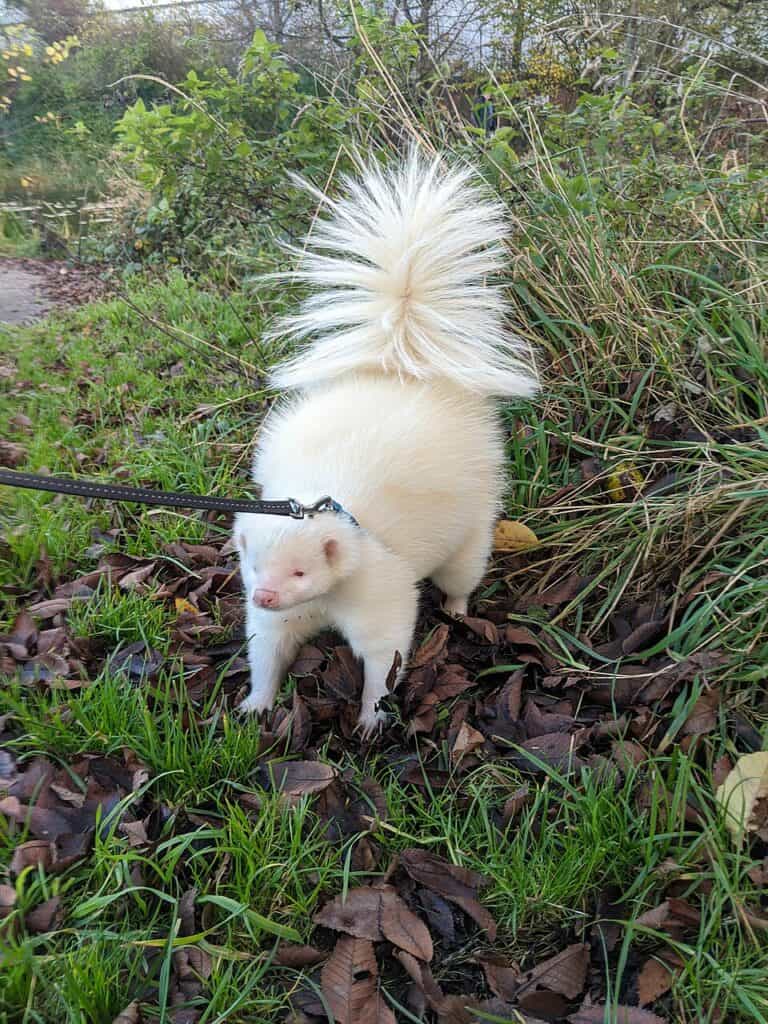
Human development and activity significantly impact skunk territorial dynamics. As natural habitats fragment due to urbanization, skunk territories become compressed, potentially increasing the frequency and intensity of territorial conflicts. Artificial food sources like garbage, pet food left outdoors, and cultivated gardens can create resource hotspots that attract multiple skunks, leading to increased territorial competition. Paradoxically, urban skunks often maintain smaller territories than their rural counterparts due to concentrated food resources, but these smaller territories may lead to more frequent boundary disputes. Wildlife management experts recommend removing attractants like unsecured garbage and fallen fruit to reduce the likelihood of skunk territorial conflicts near human habitations, which can sometimes result in defensive spraying incidents affecting people and pets.
The territorial interactions between competing skunks reveal a sophisticated social system built on communication, assessment, and ritualized conflict resolution. These distinctive creatures have evolved a multi-layered approach to territory management that minimizes physical harm while maximizing resource protection. The complex warning displays and conflict resolution behaviors exhibited during territorial disputes demonstrate how natural selection has shaped skunk behavior to balance competitive needs with survival concerns. Understanding these territorial dynamics not only provides fascinating insights into skunk ecology but also helps inform human-wildlife conflict management as these adaptable animals continue to thrive alongside human development.
- These Animals Can Recognize Their Own Names—And Some Even Talk Back - August 23, 2025
- California’s Mountain Lions Are Roaming Closer to Cities Than Ever Before - August 23, 2025
- How Animal Mothers Prepare Their Young for Independence - August 23, 2025

